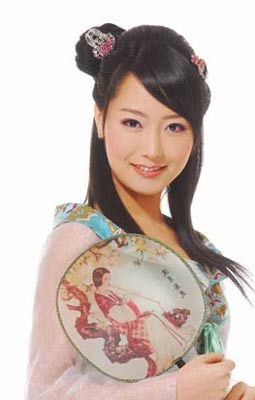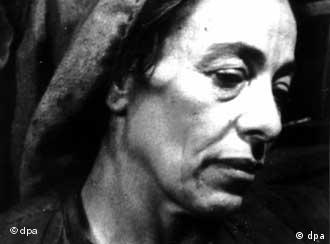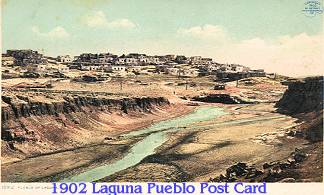 In EN 202, we've read a few scenes from The Story of the Stone, a classic Chinese novel from the 1700s, but I would like to give you a fuller picture of this novel. After all, the English translation is in five volumes, and the Longman Anthology's excerpts are mainly from the first and the second volumes.
In EN 202, we've read a few scenes from The Story of the Stone, a classic Chinese novel from the 1700s, but I would like to give you a fuller picture of this novel. After all, the English translation is in five volumes, and the Longman Anthology's excerpts are mainly from the first and the second volumes.The Story of the Stone follows Bao-yu, a wealthy, spoiled, but idealized young man from before his birth (there is a frame story) through his childhood and adolescence to his decision to become a Daoist monk. In his early years, his family flourishes, and admittedly, it is easy to lose track of the members of his extended family and their servants who people the novel. However, Bao-yu will fall on hard times as we will see in the later volumes. Translator David Hawkes mentions that Bao-yu's story may be a fictionalized version of his author, Cao Xuequin,'s life. Like Bao-yu, Cao Xuequin came from a wealthy family that lost favor with the Emperor.
That was the short version of The Story of the Stone. The pictures and text make up the long version of my summary of Volume 1.
Below is a picture of a jade pendant to evoke the pendant that Bao-yu wore around his neck. (As we learn in the frame story, he had been a jade cornerstone in a previous life. Curiously, he was the stone that a goddess rejected and a Daoist monk rescued.)

Rescued by the monk, the future Bao-yu meets a flower that will become Dai-yu, his childhood companion and first love. Below is a picture of the couple. This appears to be a scene from the end of Volume 1 or perhaps Volume 2.

In 1987, CCTV, China's major television network, broadcast a miniseries version of The Story of the Stone. (The miniseries, though, is titled The Dream of the Red Chamber, an alternate title for the novel.) Here is a scene from that series. In this version, Bao-yu is played by a man, but this role has been performed by a woman in the Shaw Brothers' version from 1977.
(The Shaw Brothers were based in Hong Kong, which was a British colony and *not* part of China in those days.)
 For a little more information, here is a link to a page on the TV series:
For a little more information, here is a link to a page on the TV series:http://www.china-guide.com/entertainment/dream.html
I will also post a link to the trailer of the recent TV series:
http://www.youtube.com/watch?v=AHUGdUH-3fI

Or you may prefer Bukit Panjang Hokkien Konguay Opera Troupe's rendition of this scene:

If you would like to hear what an operatic version is like, see this video of Dai-yu burying the flowers:
http://www.youtube.com/watch?v=LwBGFUiK0Bo
I also want to include some pictures that show you how opulent Bao-yu's lifestyle was as well as how beautiful his family's gardens were. Below is a scene from the recent remake of The Story of the Stone! In the first volume, Bao-yu's grandmother (Grandmother Jia) is often depicted holding court over her family's meals, so I imagine that this scene might be one of those occasions.

Bao-yu's life, though, is not all pleasure even though he is his grandmother's favorite. His father, on the other hand, feels contempt for him because he prefers the company of women and dislikes studying. (Jia Zheng, the father, is a Confucian scholar and civil servant, so he represents a more conventional adult masculinity.) In one of the scenes that we may read for EN 202, Jia Zheng forces Bao-yu to come up with names and brief poems for the various highlights of the garden he has built for his daughter's visit. The father appears to despise his son's contributions, but in the end he accepts them. In another scene that we will not read, Baochai's brother Xue Pan tricks Bao-yu by claiming that his father is looking for him. Bao-yu's fear of his father is that well-known.
Below is another scene from this recent remake. This depicts Dai-yu as a young girl who has just come to live with her relatives (Bao-yu's extended family). We see Dai-yu's precociousness and pensiveness in this picture. (She studies in secret and is an accomplished poet as well as a skilled needleworker who destroys her work out of spite.) However, we do not see her prickliness, but this, too, is a strong element in her character. As an adolescent, she is constantly bickering and battling with Bao-yu. She is also jealous of Bao-chai, a more conventional young lady who has also come to live with the family and will marry Bao-yu.

Here is a picture of Baochai from that same miniseries. However, this picture depicts her as a teenager. While Dai-yu is always bickering or brooding, Baochai has a much calmer, friendlier demeanor, and she is particularly noted for her kindness to servants. As a poet and needleworker, she is talented but not as talented as Dai-yu is. According to David Hawkes, Baochai and Dai-yu are two variants on the ideal woman.

The picture below depicts Bao-yu and Dai-yu together in the garden near their houses. (Yes, as adolescents, each of the young people in the family had his or her own house in the garden. Previously they had lived with Grandmother Jia.) This picture is quite fantastic, but it gives you an idea of how stunning the garden is. (It was built as a venue for a one-day visit by Bao-yu's older sister, one of the Emperor's concubines.)

Here is a more realistic picture of what the garden may have looked like. In fact, after the filming of the 1987 miniseries, the Chinese government recreated the novel's Grand View Garden.

For more information about this site, see the links below:
http://english.sina.com/p/2008/0806/176446.html
http://www.beijingguide2008.com/grand_view_garden_beijing/grand_view_garden_beijing.html
Finally, the picture below from www.culturalchina.com shows just how crowded with family members and servants The Story of the Stone is! For example, when Jia Zheng quizzes his son in the new garden, a number of male family members and other "literary gentlemen" accompany them. Moreover, quite a bit of the latter part of Volume 1 is devoted to the rivalries between the family's servants as well as those between members of the family. At one point a concubine has a spell cast on both Bao-yu and Wang Xi-Feng because she feels that the family bullies her son. Bao-yu is the first wife's son, but the bustling Wang Xi-Feng happens to be the young family member who manages the household. Bao-yu's jade, by the way, breaks the spell once a Daoist monk repurifies the stone.






























